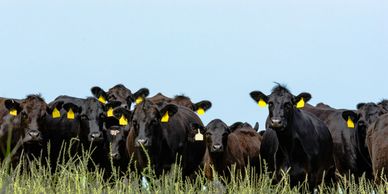Trick Variables to Take Into Consideration When Choosing Livestock Risk Protection (LRP) Insurance Coverage
When reviewing options for Animals Risk Defense (LRP) insurance, several key factors call for cautious consideration to ensure efficient threat management in the farming field. Selecting the right protection choices tailored to your certain animals procedure is vital, as is recognizing exactly how premium expenses correlate with the degree of protection supplied. Additionally, the eligibility criteria for various types of animals and the adaptability of the plan to adjust to transforming circumstances are vital aspects to weigh. Additionally, the effectiveness and openness of the cases procedure can considerably impact the general experience and monetary results for animals manufacturers. By strategically browsing these important elements, manufacturers can secure their investments and minimize potential threats efficiently.
Coverage Options
When taking into consideration Animals Risk Defense (LRP) insurance coverage, it is important to comprehend the numerous coverage choices readily available to mitigate risks in the agricultural market. Animals Risk Security (LRP) insurance uses different protection choices customized to satisfy the varied requirements of animals manufacturers. Bagley Risk Management. One of the primary protection alternatives is price insurance coverage, which shields against a decline in market rates. Manufacturers can select the protection degree that lines up with their cost danger management goals, allowing them to secure their procedures against prospective monetary losses.
Another essential insurance coverage choice is the endorsement duration, which establishes the length of time the coverage is in effect. Manufacturers can select the recommendation period that finest matches their production cycle and market conditions. In addition, protection levels and prices vary based on the sort of animals being insured, offering producers the flexibility to tailor their insurance coverage intends according to their certain demands.
Understanding the various coverage choices available under Animals Risk Security (LRP) insurance coverage is essential for manufacturers to make educated choices that efficiently shield their livestock procedures from market uncertainties.
Premium Prices

Livestock Risk Security (LRP) insurance policy offers vital insurance coverage choices customized to minimize risks in the farming market, with a substantial facet to consider being the computation and structure of premium expenses. These include the kind and number of animals being guaranteed, the coverage degree chosen, the existing market prices, historic rate data, and the length of the insurance coverage duration.
Premium prices for LRP insurance are typically calculated based upon actuarial information and run the risk of evaluation models. Insurance firms evaluate historical information on animals costs and production prices to identify an ideal costs that reflects the degree of danger involved. It is necessary for livestock producers to very carefully assess premium expenses and protection choices to guarantee they are adequately protected versus possible financial losses as a result of damaging market conditions or unpredicted events. By understanding how superior expenses are computed and structured, manufacturers can make educated decisions when picking the best LRP insurance plan for their operation.
Eligible Livestock
The decision of eligible livestock for Animals Danger Defense (LRP) insurance coverage involves careful factor to consider of details standards and characteristics. Animals kinds that are typically qualified for LRP insurance coverage include feeder cattle, fed cattle, swine, and lambs. These pets need to meet certain credentials connected to weight varieties, age, and meant usage. Additionally, the eligibility of livestock might differ based on the specific insurance policy copyright and the regards to the plan.
Feeder livestock, for instance, are commonly eligible for LRP protection if they drop within specified weight arrays. Fed cattle may likewise be qualified, yet they must satisfy specific weight and quality grade needs. Swine eligible for coverage usually include market weight pets planned for massacre. Lambs are another classification of animals that can be thought about for click this link LRP insurance, with factors such as weight and age playing a critical duty in determining their eligibility.
Before selecting LRP insurance for animals, manufacturers should carefully review the eligibility standards laid out by the insurance coverage supplier to ensure their animals satisfy the needed requirements for protection.
Plan Versatility
Plan adaptability in Animals Danger Security (LRP) insurance coverage allows manufacturers to customize insurance coverage to match their details requirements and take the chance of administration approaches. This versatility equips livestock manufacturers to customize their insurance coverage policies based on factors such as the kind of livestock they possess, market conditions, and individual threat resistance degrees. By providing customizable alternatives, LRP insurance coverage makes it possible for producers to efficiently manage their risk exposure while guarding their animals operations against unanticipated market volatility.
Cases Refine
Upon experiencing a loss or damage, manufacturers can start the insurance claims process for their Livestock Risk Protection (LRP) insurance policy by promptly calling their insurance coverage supplier. It is important for manufacturers to report the loss as quickly as feasible to speed up the cases process. When connecting to the insurance coverage company, producers will need to offer comprehensive details concerning the case, consisting of the day, nature of the loss, and any type of pertinent paperwork such as vet documents or market value.

After the evaluation is total, the insurance supplier will certainly make a decision pertaining to the check my blog case and interact the outcome to the manufacturer. The manufacturer will get compensation according to the terms of their Animals Risk Defense (LRP) insurance coverage policy if the claim is accepted. It is necessary for producers to be aware of the insurance claims procedure to make article sure a smooth experience in the occasion of a loss

Final Thought
To conclude, when choosing Animals Risk Security (LRP) insurance, it is important to consider insurance coverage alternatives, premium prices, eligible animals, plan versatility, and the claims procedure. These key elements will certainly help guarantee that ranchers and farmers are appropriately protected versus prospective risks and losses related to their livestock operations. Making an informed choice based on these factors to consider can eventually result in much better monetary safety and peace of mind for animals producers.
Animals Risk Protection (LRP) insurance coverage provides various coverage alternatives customized to meet the varied requirements of animals manufacturers.The decision of qualified animals for Animals Danger Security (LRP) insurance policy coverage involves careful consideration of particular criteria and attributes.Plan adaptability in Livestock Threat Protection (LRP) insurance coverage allows producers to tailor coverage to suit their specific needs and take the chance of administration approaches.Upon experiencing a loss or damages, producers can launch the cases process for their Livestock Danger Defense (LRP) insurance policy by without delay calling their insurance coverage company.In conclusion, when choosing Animals Risk Security (LRP) insurance coverage, it is crucial to take into consideration insurance coverage choices, premium costs, qualified animals, policy adaptability, and the claims process.